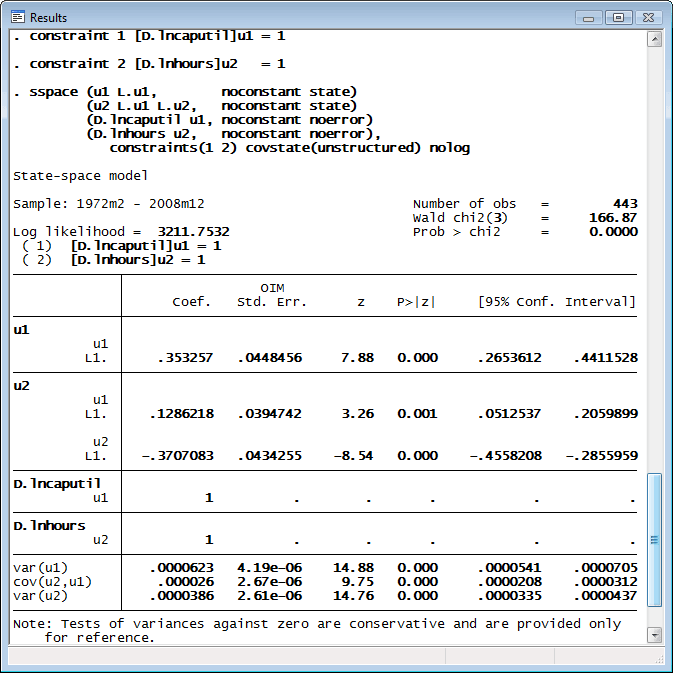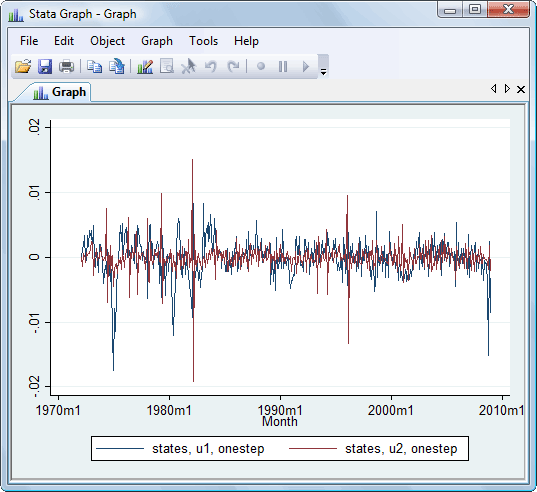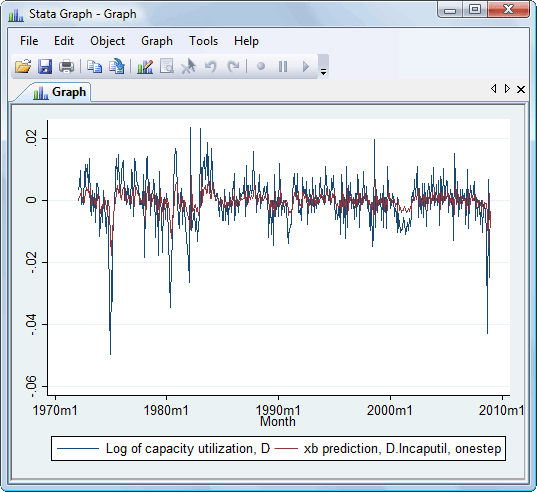

2025 Stata Economics Virtual Symposium • 6 November
State-space models were introduced in Stata 11.
|
| Order |
Stata’s new sspace command makes it easy to fit a wide variety of multivariate time-series models by casting them as linear state-space models, including vector autoregressive moving-average (VARMA) models, structural time-series (STS) models, and dynamic-factor models.
State-space models parameterize the observed dependent variables as functions of unobserved state variables. sspace allows both the observed dependent variables and the unobserved state variables to be functions of exogenous covariates.
sspace uses two forms of the Kalman filter to recursively obtain conditional means and variances of both the unobserved states and the measured dependent variables that are used to compute the likelihood function. sspace allows you to specify your model in either the covariance form or the error form. sspace works with models that are nonstationary and models that are stationary. Options allow you to specify the structures of the error covariance matrices for the state and observation equations, and other options allow you to specify how the initial values for the Kalman filter are obtained.
We have data on the natural log of the capacity utilization rate for the manufacturing sector of the U.S. economy, lncaputil, and on the log of manufacturing hours, lnhours. We treat these variables as first-difference stationary, and we model D.lncaputil and D.lnhours as a restricted first-order vector autoregressive moving-average (VARMA(1,1)) process.

We can obtain one-step predictions of the two unobserved states by typing
. predict u1 u2, states
We can graph those predicted states by typing
. tsline u1 u2

We can obtain one-step predictions of our two dependent variables by typing
. predict caputilhat hourshat
A graph comparing the one-step predictions of the difference in the log of capacity utilization with its predictions is created by typing
. tsline D.lncaputil caputilhat

For a complete list of what’s new in time-series analysis, click here.
Explore more about state-space models in Stata.
Learn
Free webinars
NetCourses
Classroom and web training
Organizational training
Video tutorials
Third-party courses
Web resources
Teaching with Stata
© Copyright 1996–2025 StataCorp LLC. All rights reserved.
×
We use cookies to ensure that we give you the best experience on our website—to enhance site navigation, to analyze usage, and to assist in our marketing efforts. By continuing to use our site, you consent to the storing of cookies on your device and agree to delivery of content, including web fonts and JavaScript, from third party web services.
Cookie Settings
Last updated: 16 November 2022
StataCorp LLC (StataCorp) strives to provide our users with exceptional products and services. To do so, we must collect personal information from you. This information is necessary to conduct business with our existing and potential customers. We collect and use this information only where we may legally do so. This policy explains what personal information we collect, how we use it, and what rights you have to that information.
These cookies are essential for our website to function and do not store any personally identifiable information. These cookies cannot be disabled.
This website uses cookies to provide you with a better user experience. A cookie is a small piece of data our website stores on a site visitor's hard drive and accesses each time you visit so we can improve your access to our site, better understand how you use our site, and serve you content that may be of interest to you. For instance, we store a cookie when you log in to our shopping cart so that we can maintain your shopping cart should you not complete checkout. These cookies do not directly store your personal information, but they do support the ability to uniquely identify your internet browser and device.
Please note: Clearing your browser cookies at any time will undo preferences saved here. The option selected here will apply only to the device you are currently using.